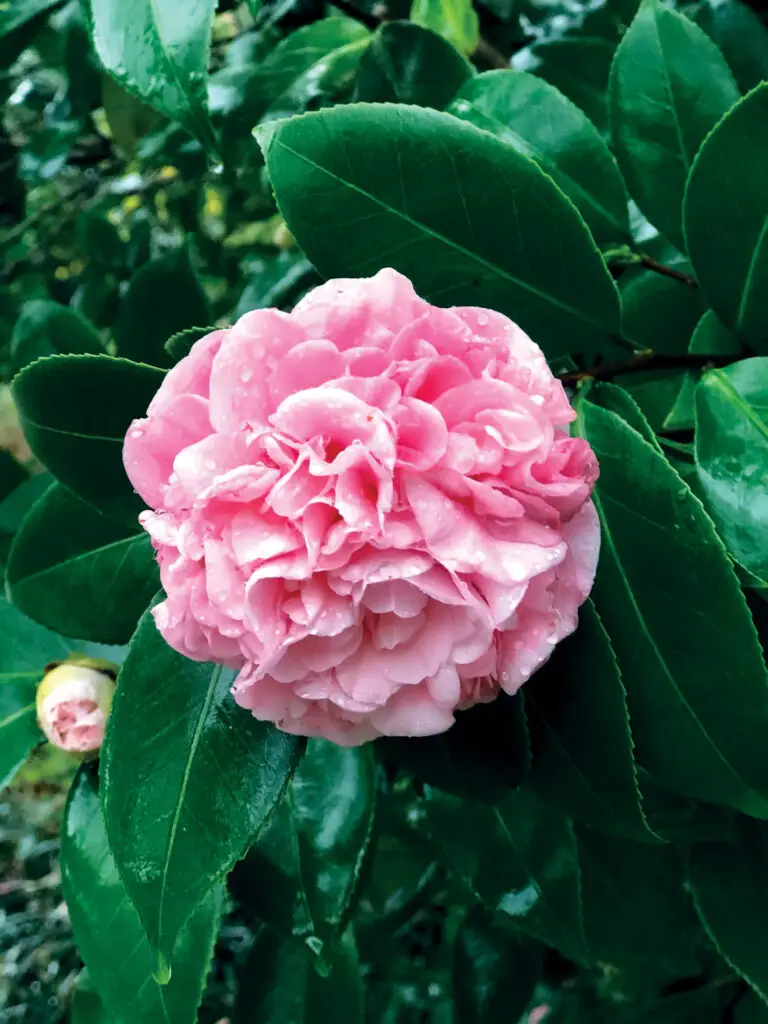Camellias, the “roses of winter,” are in bloom across the state this month, which is the perfect excuse for a road trip to one, or all, of Alabama’s nationally recognized camellia gardens.
Those gardens, which are sprinkled across our state from The Magic City to the Wiregrass and the Black Belt to the Gulf Coast, are part of a nationwide network of some 65 camellia plantings that make up the American Camellia Trail. Read More
The Camellia Trail, a partnership between the American Camellia Society and public gardens, was established to help preserve and support these collections, many of which are historic, and raise public awareness of these plants. To qualify for a spot on that trail, camellias must be a prominent feature of the garden (a minimum of 50 cultivars and/or species is required). In addition, managers of these gardens must create and maintain a register of all camellias in the garden each of which must be labeled and mapped.
More than half of the ACT gardens are located in southern states, including Alabama which boasts six sites: Aldridge Gardens in Hoover, Beeland Park Gardens in Greenville, Bellingrath Gardens and Home in Theodore, Cornerstone Gardens in Mobile and the Mobile and Dothan Botanical Gardens.
It’s no wonder the South claims so much of the trail because it is here that camellias, natives of Asia, found a happy second home within our temperate climate. They also found many, many adoring fans here, people who value camellias as handsome, long-lived, low-maintenance, landscape evergreens but who adore them for their exquisite blooms, which appear a bit like magic during the coldest times of year.

Photo by Mark Stephenson
Those blooms brighten an otherwise drab winter landscape. And oh what blooms they have! The thousands of cultivars available offer a kaleidoscope of colors options (from pure white and pale pink to deep red and variegated) and petal formations (single, double, peony, rose and more). Some produce huge blooms, others petite, but all are elegant.
Camellias can also be planted in a variety of locations, including in pots, and once they are established, they require little (if any) pruning, have few pests, and don’t require tons of watering. They do, however, need to be pampered at planting.
According to experts, camellias are a prime example of the old gardening adage “dig a fifty-dollar hole for a five-dollar tree.” They like loose, well-drained soils which begins with digging a large hole (typically twice the diameter and 1.5 times the height of the root ball) and adding organic matter to the soil. They also need to be planted “high” in the hole so that at least one inch of the root ball remains above ground level. This ensures the plant’s feet don’t get too wet. Add a good layer of mulch around the root ball to retain moisture and protect exposed roots, and the plant should thrive. (Learn more about camellia culture in Alabama in The Culture of Camellias: The State Flower of Alabama at www.aces.edu)
Camellias can be planted any time of year in Alabama, but they do best if planted in late fall and early winter or in early spring. And while there are cultivars that bloom as early as September and as late as mid-March, now through February is their time to shine. It’s also a chance to peruse the many camellia options by visiting the gardens on the Camellia Trail and in other gardens and landscapes across the state.
This is also camellia show season, a time when local camellia groups sponsor exhibits of the year’s best blooms and where camellia devotees can share expertise and often plants with one another the public. Check with your local camellia group, a list of which can be found on the ACS site under the “Clubs and Societies” link. The site is also chock full of information on all things camellias.




